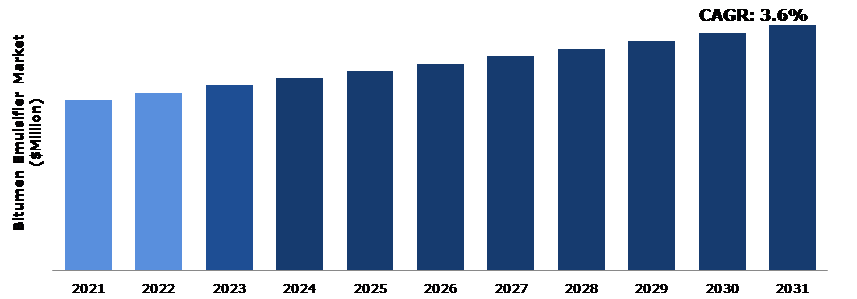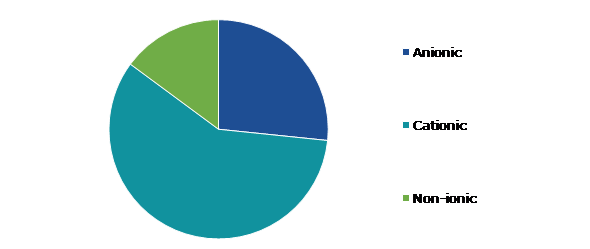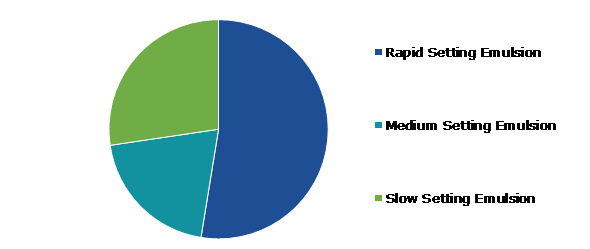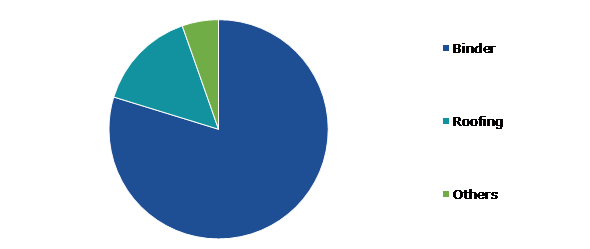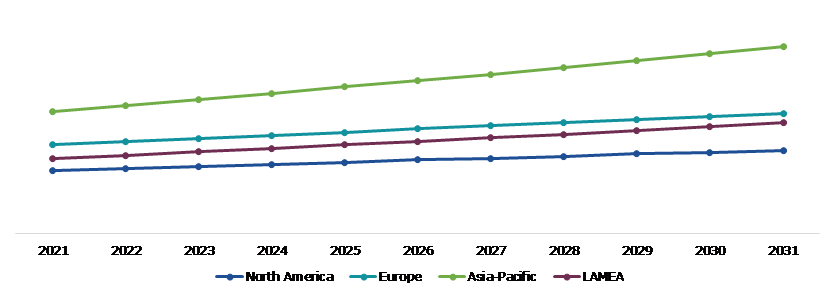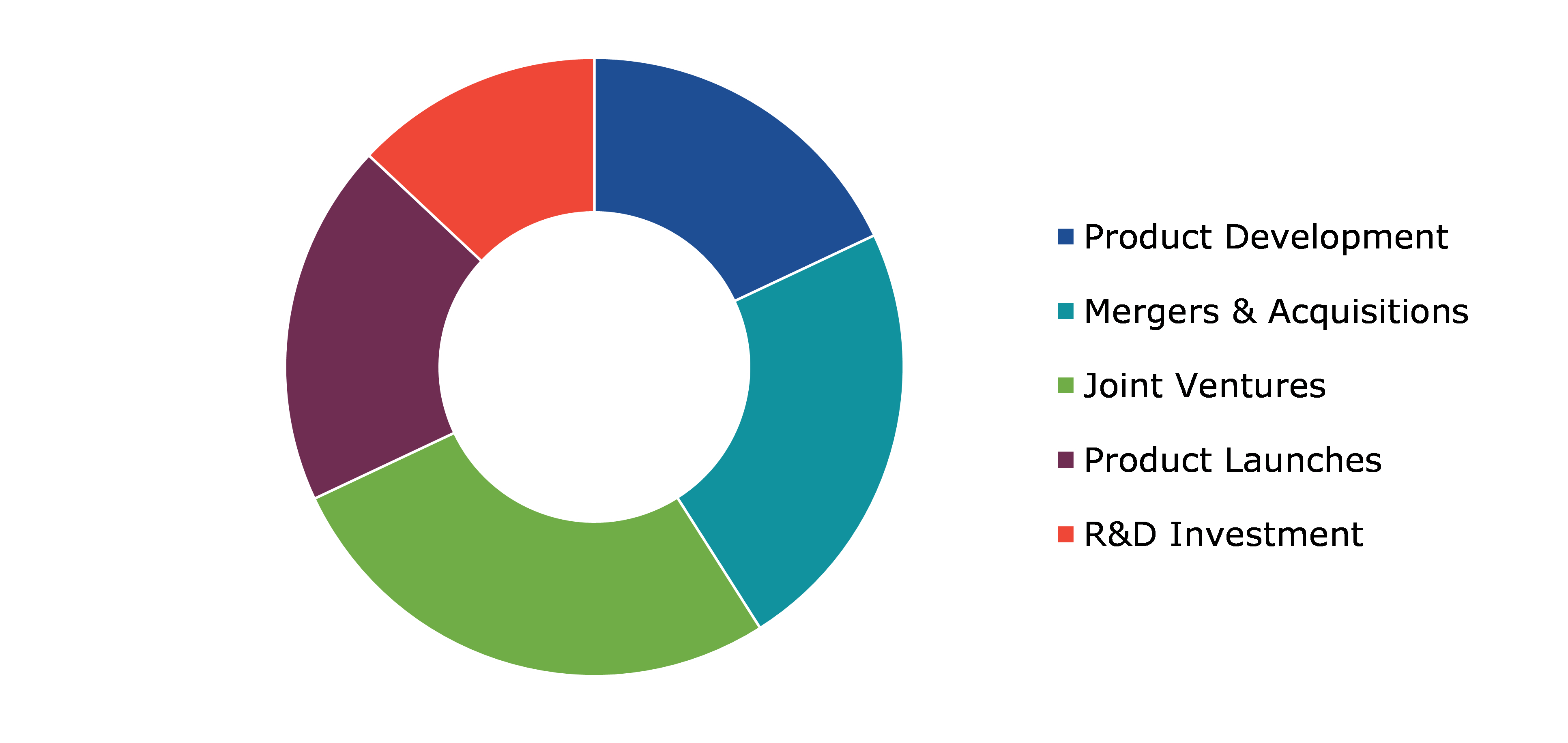Bitumen Emulsifier Market Report
RA00028
Bitumen Emulsifier Market by Surface Charge (Anionic, Cationic, and Non-ionic), Setting Time (Rapid Setting Emulsion, Medium Setting Emulsion, and Slow Setting Emulsion), and Application (Binder, Roofing, and Others): Global Opportunity Analysis and Industry Forecast, 2022-2031
Global Bitumen Emulsifier Market Analysis
The Global Bitumen Emulsifier Market Size was $128.4 million in 2021 and is predicted to expand at a CAGR of 3.6%, generating a revenue of $184.4 million by 2031.
Global Bitumen Emulsifier Market Synopsis
Bitumen emulsifier is a mixture of water and bitumen. Bitumen is utilized in the building of roadways in developing and impoverished countries. It is utilized in recycling and road repairs in wealthy countries. Bitumen emulsifier has anti-stripping qualities. Concrete structure protection, ground permeation, metal surface coating, electro and waterproof cardboard manufacture, electro and thermal insulation materials sand grouting, soil insulation, and waterproofing are its applications. The governments of various countries are investing heavily in road development and maintenance due to rapid urbanization. It takes less time to settle and produces superior coatings in all climatic situations. These elements are having a positive impact on the growth of bitumen emulsifiers.
However, the primary difficulties in the bitumen emulsifier market include severe environmental laws, high product costs, and a complex production process. The market for bitumen emulsifiers is hampered by tight environmental laws. The creation of bitumen emulsifiers requires the employment of hazardous chemicals, which are emitted into the environment throughout the manufacturing process. These compounds can pollute the air and water, resulting in tight environmental laws.
Bitumen emulsifier demand is being driven by governments in both developing and wealthy nations increasing their spending on public sector infrastructure, including hospitals, institutions, and railroads. Nations like India, Indonesia, South Korea, and Malaysia are experiencing a rise in demand for commercial infrastructure, which is propelling market expansion. In contrast to Indonesia, which has experienced stable economic growth, China has experienced far slower growth in the construction sector, and it is anticipated that Indonesia will soon surpass Japan in this regard.
Bitumen Emulsifier Overview
Bitumen is a black viscous fluid that is created by combining small crude distillation particles. It is an important component of asphalt, which is used to build roads and other infrastructure. It is a vital material for both large and minor infrastructure and building projects. At the moment, the demand for bitumen emulsifiers is expanding, owing mostly to the various government programs.
COVID-19 Impact on Global Bitumen Emulsifier Market
The COVID-19 pandemic had a negative impact on the market for bitumen emulsifiers worldwide. In the road construction industry, cationic, anionic, and rapid setting bitumen emulsifiers are frequently employed. These diverse emulsifiers are selected based on the environment and length of the project. The bitumen emulsifier market growth is predicted to experience growth in the post-COVID-19 era. Roads are crucial for establishing an economy, preserving trade routes, boosting tourism, and connecting different locations. To prevent the connection from breaking, any nation must take all necessary measures to sustain them. The bitumen emulsifier is a crucial element in the building and upkeep of roads. The world was put on lockdown as a result of the coronavirus outbreak, which had a negative impact on the economy. To stop the pandemic from spreading, almost every industry was temporarily shut down. This caused a decline in a number of markets, including the market for bitumen emulsifiers, which is crucial for constructing and maintaining roads.
For instance, in July 2020, Indian Oil Corporation, an Indian state-run oil company, announced cooperation with Total Inc., a French oil and gas corporation, to create high-quality bitumen variations and derivatives to suit the expanding demands of the road-building sector. This agreement is expected to significantly assist both companies in boosting their market share.
Global Bitumen Emulsifier Market Growing Significantly Due to Increasing Road Construction Activity
Increasing road-building activities throughout the world is one of the primary reasons driving the global bitumen emulsifier market growth during the forecast period. Bitumen emulsifier is mostly used for road maintenance work since it requires less time to settle and provides a superior coating in all working situations. Roadways are a popular source of transportation, and government measures to upgrade them will play an important role in the growth of the bitumen emulsifiers market. Furthermore, large investments in roadway development will increase modernization, which will boost product demand. One of the key bitumen emulsifier industry insights is the increase in the usage of bitumen emulsion in road-building operations.
To know more about the global bitumen emulsifier market drivers, get in touch with our analysts here.
Storage Duration and Environmental Conditions Pose Significant Threat to Growth of Bitumen Emulsifier Industry
The main issue with bitumen emulsions are the storage period, which can range from 5 to 6 days depending on the composition of the mixing process. Elements that have a negative impact on the environment, such as temperature, wind, and emulsion type, have a substantial negative impact on the bitumen emulsifier market's expansion.
Growing Urbanization Driving the Building of Well-developed Roadways in Countries, Resulting in an Expanding Economy and Opportunities for Global Bitumen Emulsifier Market
Bitumen emulsifiers are additives that are added to bitumen to regulate the bitumen slurry with water. The emulsifier is a surface-active substance that enables water dilution. The use of bitumen emulsifiers has increased in the global market at fair rates. The growth in the bitumen emulsifier market can be increased with more developed projects across countries. Infrastructure development eventually benefits a country's economy. The growth in the bitumen emulsifier market demand is attributed to road development in emerging nations as a result of urbanization, as well as the maintenance of existing roads in developed and developing countries. Bitumen improves coatings in various environmental conditions. Roadways are one of the most popular routes of transportation, and governments are investing heavily in their growth and construction. Growing urbanization is spurring the building of well-developed roadways in countries, resulting in an expanding economy. These reasons are propelling the global bitumen emulsifier market growth.
To know more about the global bitumen emulsifier market opportunities, get in touch with our analysts here.
Global Bitumen Emulsifier Market, by Surface Charge
On the basis of surface charge, the market is divided into anionic, cationic, and non-ionic. Among these, the cationic segment accounted for the highest market share in 2021, whereas the anionic sub-segment is estimated to show the fastest growth during the forecast period.
Global Bitumen Emulsifier Market Size, by Surface Charge, 2021
Source: Research Dive Analysis
The cationic segment is accounted to have a dominant market in 2021. Cationic bitumen emulsifier is an excellent choice for a variety of road and building development and maintenance tasks. As a result, the category accounted for more than 75% of the worldwide bitumen emulsifiers market in 2021 and is likely to exhibit promising growth during the forecast period. They are the most extensively utilized product type in the world due to their superior coating and adhesion qualities with a wide variety of aggregates. Because the majority of aggregates used with bitumen emulsions are negatively charged, cationic bitumen emulsifiers are most suited for usage with them.
The anionic segment is anticipated to show fastest growth by 2031. An anionic bitumen emulsifier is created by bitumen particles moving in an electric field. The emulsifier droplet migration toward the anode is referred to as anionic (positive terminal). Bitumen droplets containing the emulsifying agent are present at the water-bitumen interface of an anionic emulsifier. The emulsifying agent's tail aligns itself in the bitumen, but its positive head section floats around in the water, leaving its negatively charged head portion at the surface of the droplet. The outcome is that all the droplets now have a negative charge.
Global Bitumen Emulsifier Market, by Setting Time
On the basis of setting time, the market is divided into rapid setting emulsion, medium setting emulsion, and slow setting emulsion. Among these, the automotive segment accounted for highest revenue share in 2021.
Global Bitumen Emulsifier Market Share, by Setting Time, 2021
Source: Research Dive Analysis
The rapid setting segment is accounted to have a dominant market share in 2021. Rapid bitumen emulsion is extensively produced by bitumen emulsion manufacturers for tacking coat applications. It breaks down at lightning speed as it comes in contact with the aggregate. As a result, it speeds up the setting process and removes any irregularities or spots on the road. It is a water-based emulsion with bitumen and aggregate. It is well-known for its speed and is employed as an excellent road solution. This emulsion is notable for its low viscosity and quick setting time.
Global Bitumen Emulsifier Market, by Application
On the basis of application, the market is divided into binder, roofing and others. Among these, the binder segment accounted for the highest revenue share in 2021.
Global Bitumen Emulsifier Market Trends, by Application, 2021
Source: Research Dive Analysis
The binder segment is accounted to have a dominant market share in 2021. A dispersing aqueous phase and a bituminous binder usually contain an initial bitumen and are mixed in the presence of at least one emulsifying agent to create a bituminous binder emulsion that contains a final bitumen. At least one oxidizing agent is mixed with the dispersing aqueous phase or the bituminous binder or is added as a separate step before or during the mixing step. The invention also pertains to a composition for creating a modified emulsion and its application in the creation of tack coatings with a trackless finish.
Bitumen Emulsifier Market, Regional Insights
The bitumen emulsifier market was investigated across North America, Europe, Asia-Pacific, and LAMEA.
Bitumen Emulsifier Market Size & Forecast, by Region, 2021-2031 (USD Million)
Source: Research Dive Analysis
Market for Bitumen Emulsifier in Asia-Pacific to be the Most Dominant
The market share for bitumen emulsifiers worldwide is anticipated to expand rapidly in the Asia-Pacific. The construction sector is predicted to be supported by the availability of trained labor and raw materials in nations like China and India, which is expected to accelerate the market expansion for bitumen emulsifiers. In addition, the expansion of public infrastructures like roads, motorways, and airports is expected to spur market expansion.
Competitive Scenario in the Global Bitumen Emulsifier Market
Investments and agreements are common strategies followed by major market players. For instance, in November 2021, LUM GmbH, a German measuring instrument producer, announced a collaboration with VIALAB SARL, a French expert in bitumen emulsion and cold asphalt pavements. This strategic alliance aims to combine the firms' knowledge in petroleum, bitumen, and related emulsions.
Source: Research Dive Analysis
Some of the leading bitumen emulsifier market players are Indian Oil Corporation, British Petroleum, Chevron Texaco Corporation, JX Nippon Oil & Energy Corporation, Royal Dutch Shell Plc, Total S.A., Nynas AB, Marathon Oil Company, and China Petrochemical Corporation, and Opal Paints Products Pvt. Ltd.
| Aspect | Particulars |
| Historical Market Estimations | 2020 |
| Base Year for Market Estimation | 2021 |
| Forecast Timeline for Market Projection | 2022-2030 |
| Geographical Scope | North America, Europe, Asia-Pacific, LAMEA |
| Segmentation by Surface Charge |
|
| Segmentation by Setting Time |
|
| Segmentation by Application |
|
| Key Companies Profiled |
|
Q1. What is the size of the global bitumen emulsifier market?
A. The size of the global bitumen market was over $128.4 million in 2021 and is projected to reach $184.4 million by 2031.
Q2. Which are the major companies in the bitumen emulsifier market?
A. Increasing Road construction activities across the globe are predicted to drive the market during the forecast period.
Q3. Which region, among others, will possess great investment opportunities in the near future?
A. The Asia-Pacific region possesses great investment opportunities for investors to witness the most promising growth in the future.
Q4. What will be the growth rate of the Asia-Pacific bitumen emulsifier market?
A. Asia-Pacific bitumen emulsifier market share is anticipated to expand at a 3.6% CAGR during the forecast period.
Q5. What are the strategies opted by the leading players in this market?
A. Product development and joint ventures are the two key strategies opted by the operating companies in this market.
Q6. Which companies are investing more in R&D practices?
A. Shell, Total S.A, and Nynas AB are the key players in the bitumen emulsifier market that are investing more in R&D activities for developing new products and technologies.
1.Research Methodology
1.1.Desk Research
1.2.Real time insights and validation
1.3.Forecast model
1.4.Assumptions and forecast parameters
1.5.Market size estimation
1.5.1.Top-down approach
1.5.2.Bottom-up approach
2.Report Scope
2.1.Market Definition
2.2.Key objectives of the study
2.3.Report Overview
2.4.Market segmentation
2.5.Overview of the impact of COVID-19 on the global bitumen emulsifier market
3.Executive Summary
4.Market Overview
4.1.Introduction
4.2.Growth impact forces
4.2.1.Drivers
4.2.2.Restraints
4.2.3.Opportunities
4.3.Market value chain analysis
4.3.1.List of raw material suppliers
4.3.2.List of manufacturers
4.3.3.List of distributors
4.4.Innovation & sustainability matrices
4.4.1.Technology matrix
4.4.2.Regulatory matrix
4.5.Porter’s five forces analysis
4.5.1.Bargaining power of suppliers
4.5.2.Bargaining power of consumers
4.5.3.Threat of substitutes
4.5.4.Threat of new entrants
4.5.5.Competitive rivalry intensity
4.6.PESTLE analysis
4.6.1.Political
4.6.2.Economical
4.6.3.Social
4.6.4.Technological
4.6.5.Legal
4.6.6.Environmental
4.7.Impact of COVID-19 on the bitumen emulsifier market
4.7.1.Pre-covid market scenario
4.7.2.Post-covid market scenario
5.Bitumen emulsifier Market, by Surface Charge
5.1.Overview
5.2.Anionic
5.2.1.Definition, key trends, growth factors, and opportunities
5.2.2.Market size analysis, by region
5.2.3.Market share analysis, by country
5.3.Cationic
5.3.1.Definition, key trends, growth factors, and opportunities
5.3.2.Market size analysis, by region
5.3.3.Market share analysis, by country
5.4.Non-ionic
5.4.1.Definition, key trends, growth factors, and opportunities
5.4.2.Market size analysis, by region
5.4.3.Market share analysis, by country
5.5.Research Dive Exclusive Insights
5.5.1.Market attractiveness
5.5.2.Competition heatmap
6.Bitumen emulsifier Market, by Setting Time
6.1.Rapid setting emulsion
6.1.1.Definition, key trends, growth factors, and opportunities
6.1.2.Market size analysis, by region
6.1.3.Market share analysis, by country
6.2.Medium setting emulsion
6.2.1.Definition, key trends, growth factors, and opportunities
6.2.2.Market size analysis, by region
6.2.3.Market share analysis, by country
6.3.Slow setting emulsion
6.3.1.Definition, key trends, growth factors, and opportunities
6.3.2.Market size analysis, by region
6.3.3.Market share analysis, by country
6.4.Research Dive Exclusive Insights
6.4.1.Market attractiveness
6.4.2.Competition heatmap
7.Bitumen emulsifier Market, by Application
7.1.Binder
7.1.1.Definition, key trends, growth factors, and opportunities
7.1.2.Market size analysis, by region
7.1.3.Market share analysis, by country
7.2.Roofing
7.2.1.Definition, key trends, growth factors, and opportunities
7.2.2.Market size analysis, by region
7.2.3.Market share analysis, by country
7.3.Others
7.3.1.Definition, key trends, growth factors, and opportunities
7.3.2.Market size analysis, by region
7.3.3.Market share analysis, by country
7.4.Research Dive Exclusive Insights
7.4.1.Market attractiveness
7.4.2.Competition heatmap
8.Bitumen emulsifier Market, by Region
8.1.North America
8.1.1.U.S.
8.1.1.1.Market size analysis, by Game Type, 2021-2031
8.1.1.2.Market size analysis, by Application, 2021-2031
8.1.1.3.Market size analysis, by End-use, 2021-2031
8.1.2.Canada
8.1.2.1.Market size analysis, by Game Type, 2021-2031
8.1.2.2.Market size analysis, by Application, 2021-2031
8.1.2.3.Market size analysis, by End-use, 2021-2031
8.1.3.Mexico
8.1.3.1.Market size analysis, by Game Type, 2021-2031
8.1.3.2.Market size analysis, by Application, 2021-2031
8.1.3.3.Market size analysis, by End-use, 2021-2031
8.1.4.Research Dive Exclusive Insights
8.1.4.1.Market attractiveness
8.1.4.2.Competition heatmap
8.2.Europe
8.2.1.Germany
8.2.1.1.Market size analysis, by Game Type, 2021-2031
8.2.1.2.Market size analysis, by Application, 2021-2031
8.2.1.3.Market size analysis, by End-use, 2021-2031
8.2.2.UK
8.2.2.1.Market size analysis, by Game Type, 2021-2031
8.2.2.2.Market size analysis, by Application, 2021-2031
8.2.2.3.Market size analysis, by End-use, 2021-2031
8.2.3.France
8.2.3.1.Market size analysis, by Game Type, 2021-2031
8.2.3.2.Market size analysis, by Application, 2021-2031
8.2.3.3.Market size analysis, by End-use, 2021-2031
8.2.4.Spain
8.2.4.1.Market size analysis, by Game Type, 2021-2031
8.2.4.2.Market size analysis, by Application, 2021-2031
8.2.4.3.Market size analysis, by End-use, 2021-2031
8.2.5.Italy
8.2.5.1.Market size analysis, by Game Type, 2021-2031
8.2.5.2.Market size analysis, by Application, 2021-2031
8.2.5.3.Market size analysis, by End-use, 2021-2031
8.2.6.Rest of Europe
8.2.6.1.Market size analysis, by Game Type, 2021-2031
8.2.6.2.Market size analysis, by Application, 2021-2031
8.2.6.3.Market size analysis, by End-use, 2021-2031
8.2.7.Research Dive Exclusive Insights
8.2.7.1.Market attractiveness
8.2.7.2.Competition heatmap
8.3.Asia Pacific
8.3.1.China
8.3.1.1.Market size analysis, by Game Type, 2021-2031
8.3.1.2.Market size analysis, by Application, 2021-2031
8.3.1.3.Market size analysis, by End-use, 2021-2031
8.3.2.Japan
8.3.2.1.Market size analysis, by Game Type, 2021-2031
8.3.2.2.Market size analysis, by Application, 2021-2031
8.3.2.3.Market size analysis, by End-use, 2021-2031
8.3.3.India
8.3.3.1.Market size analysis, by Game Type, 2021-2031
8.3.3.2.Market size analysis, by Application, 2021-2031
8.3.3.3.Market size analysis, by End-use, 2021-2031
8.3.4.Australia
8.3.4.1.Market size analysis, by Game Type, 2021-2031
8.3.4.2.Market size analysis, by Application, 2021-2031
8.3.4.3.Market size analysis, by End-use, 2021-2031
8.3.5.South Korea
8.3.5.1.Market size analysis, by Game Type, 2021-2031
8.3.5.2.Market size analysis, by Application, 2021-2031
8.3.5.3.Market size analysis, by End-use, 2021-2031
8.3.6.Rest of Asia Pacific
8.3.6.1.Market size analysis, by Game Type, 2021-2031
8.3.6.2.Market size analysis, by Application, 2021-2031
8.3.6.3.Market size analysis, by End-use, 2021-2031
8.3.7.Research Dive Exclusive Insights
8.3.7.1.Market attractiveness
8.3.7.2.Competition heatmap
8.4.LAMEA
8.4.1.Brazil
8.4.1.1.Market size analysis, by Game Type, 2021-2031
8.4.1.2.Market size analysis, by Application, 2021-2031
8.4.1.3.Market size analysis, by End-use, 2021-2031
8.4.2.Saudi Arabia
8.4.2.1.Market size analysis, by Game Type, 2021-2031
8.4.2.2.Market size analysis, by Application, 2021-2031
8.4.2.3.Market size analysis, by End-use, 2021-2031
8.4.3.UAE
8.4.3.1.Market size analysis, by Game Type, 2021-2031
8.4.3.2.Market size analysis, by Application, 2021-2031
8.4.3.3.Market size analysis, by End-use, 2021-2031
8.4.4.South Africa
8.4.4.1.Market size analysis, by Game Type, 2021-2031
8.4.4.2.Market size analysis, by Application, 2021-2031
8.4.4.3.Market size analysis, by End-use, 2021-2031
8.4.5.Rest of LAMEA
8.4.5.1.Market size analysis, by Game Type, 2021-2031
8.4.5.2.Market size analysis, by Application, 2021-2031
8.4.5.3.Market size analysis, by End-use, 2021-2031
8.4.6.Research Dive Exclusive Insights
8.4.6.1.Market attractiveness
8.4.6.2.Competition heatmap
9.Competitive Landscape
9.1.Top winning strategies, 2021
9.1.1.By strategy
9.1.2.By year
9.2.Strategic overview
9.3.Market share analysis, 2021
10.Company Profiles
10.1.Indian Oil Corporation
10.1.1.Overview
10.1.2.Business segments
10.1.3.Product portfolio
10.1.4.Financial performance
10.1.5.Recent developments
10.1.6.SWOT analysis
10.2.British Petroleum
10.2.1.Overview
10.2.2.Business segments
10.2.3.Product portfolio
10.2.4.Financial performance
10.2.5.Recent developments
10.2.6.Coloplast Corp
10.3.Chevron Texaco Corporation
10.3.1.Overview
10.3.2.Business segments
10.3.3.Product portfolio
10.3.4.Financial performance
10.3.5.Recent developments
10.3.6.SWOT analysis
10.4.JX Nippon Oil & Energy Corporation
10.4.1.Overview
10.4.2.Business segments
10.4.3.Product portfolio
10.4.4.Financial performance
10.4.5.Recent developments
10.4.6.SWOT analysis
10.5.Royal Dutch Shell Plc
10.5.1.Overview
10.5.2.Business segments
10.5.3.Product portfolio
10.5.4.Financial performance
10.5.5.Recent developments
10.5.6.SWOT analysis
10.6.Total S.A.
10.6.1.Overview
10.6.2.Business segments
10.6.3.Product portfolio
10.6.4.Financial performance
10.6.5.Recent developments
10.6.6.SWOT analysis
10.7.Nynas AB
10.7.1.Overview
10.7.2.Business segments
10.7.3.Product portfolio
10.7.4.Financial performance
10.7.5.Recent developments
10.7.6.SWOT analysis
10.8.Marathon Oil Company
10.8.1.Overview
10.8.2.Business segments
10.8.3.Product portfolio
10.8.4.Financial performance
10.8.5.Recent developments
10.8.6.SWOT analysis
10.9.China Petrochemical Corporation
10.9.1.Overview
10.9.2.Business segments
10.9.3.Product portfolio
10.9.4.Financial performance
10.9.5.Recent developments
10.9.6.SWOT analysis
10.10.Chevron Texaco Corporation
10.10.1.Overview
10.10.2.Business segments
10.10.3.Product portfolio
10.10.4.Financial performance
10.10.5.Recent developments
10.10.6.SWOT analysis
Roads serve as a bridge to connect areas and are essential for preserving commerce routes, boosting tourism, and establishing economies. The global expansion of road infrastructure and its influence on the environment require significant efforts to develop ecologically friendly and sustainable road materials. As a result, maintaining them is critical for any country to ensure that connectivity does not fail. The bitumen emulsifier is a vital component that aids in road building and maintenance.
Bitumen emulsifiers are chemicals added to bitumen to stabilize the bitumen slurry in water. These emulsifiers are surface-active substances that allow for water dilution. The addition of water makes it easier to use because the bitumen does not need to be heated before use. There are three different types of bitumen emulsifiers: anionic, cationic, and non-ionic. Anionic bitumen emulsifiers are based on the chemical reaction of fatty acids with bases like potash or caustic soda to produce salt. This salt functions as a powerful bitumen emulsifier. Cationic bitumen excipients are acid salts of amines derived from fatty acids. These compounds include quaternary ammonium salts, diamines, or ethoxylated derivatives. The global bitumen emulsifier market is expanding at a rapid pace due to improvements in the economic conditions, particularly in the construction industry, in emerging economies.
Newest Insights in the Bitumen Emulsifier Market
Government attempts in numerous countries to simplify the process of infrastructure development and increased rate of construction of roadways and highways have benefited from recent advancements in the field of bitumen emulsifiers. As per a report by Research Dive, the global bitumen emulsifier market is expected to surpass a revenue of $184.4 million in the 2022–2031 timeframe. The Asia-Pacific bitumen emulsifier market is expected to grow at a rapid pace in the coming years. This is because the region has a gigantic demand for bitumen emulsifiers owing to the growth of public infrastructure such as motorways, roads, and airports in the region.
How are Market Players Responding to the Rising Demand for Bitumen Emulsifier?
Market players are greatly investing in pioneering research and inventions to cater for the rising demand for bitumen emulsifier. Some of the foremost players in the bitumen emulsifier market are British Petroleum, Indian Oil Corporation, JX Nippon Oil & Energy Corporation, Chevron Texaco Corporation, Total S.A., Royal Dutch Shell Plc, Marathon Oil Company, Nynas AB, Opal Paints Products Pvt. Ltd., China Petrochemical Corporation, and others. These players are focused on planning and devising tactics such as mergers and acquisitions, collaborations, novel advances, and partnerships to reach a notable position in the global market.
For instance:
- In July 2020, Indian Oil Corporation, a state-run oil business in India, formed a deal with Total Inc., a French oil and gas company, to produce high-quality bitumen derivatives and variants in order to meet the industry's expanding demand.
- In June 2021, Arkema-Road Science, a prominent technological provider of binders, emulsifiers, additives, and system technologies, announced the sponsor of the 7th E&E Congress as well as the launch of a novel bitumen emulsifier for use in cold mix applications.
- In October 2021, LUM GmbH, one of the leading producers for analytical devices for dispersion analysis and particle characterization, partnered with VIALAB SARL, a French company, to offer French customers enhanced expertise in solving their problems in the field of petroleum, bitumen, and related emulsions.
COVID-19 Impact on the Global Bitumen Emulsifier Market
The unpredicted rise of the coronavirus pandemic in 2020 had adversely impacted the global bitumen emulsifier market. The coronavirus outbreak, which had a detrimental effect on the economy, put the entire world on high alert. Almost all sectors of the economy were temporarily shut down to prevent the virus from spreading. Due to this, several markets experienced a downturn, including the market for bitumen emulsifiers, which is essential for building and maintaining roadways. Roads are crucial for preserving trade routes, establishing an economy, connecting different locations, and boosting tourism. Several nations are taking all the necessary steps to maintain road conditions in order to keep these connections from breaking post-pandemic crisis. Thus, the bitumen emulsifier market is expected to expand in the post-COVID-19 period.
Personalize this research
- Triangulate with your own data
- Request your format and definition
- Get a deeper dive on a specific application, geography, customer or competitor
- + 1-888-961-4454 Toll - Free
- support@researchdive.com

